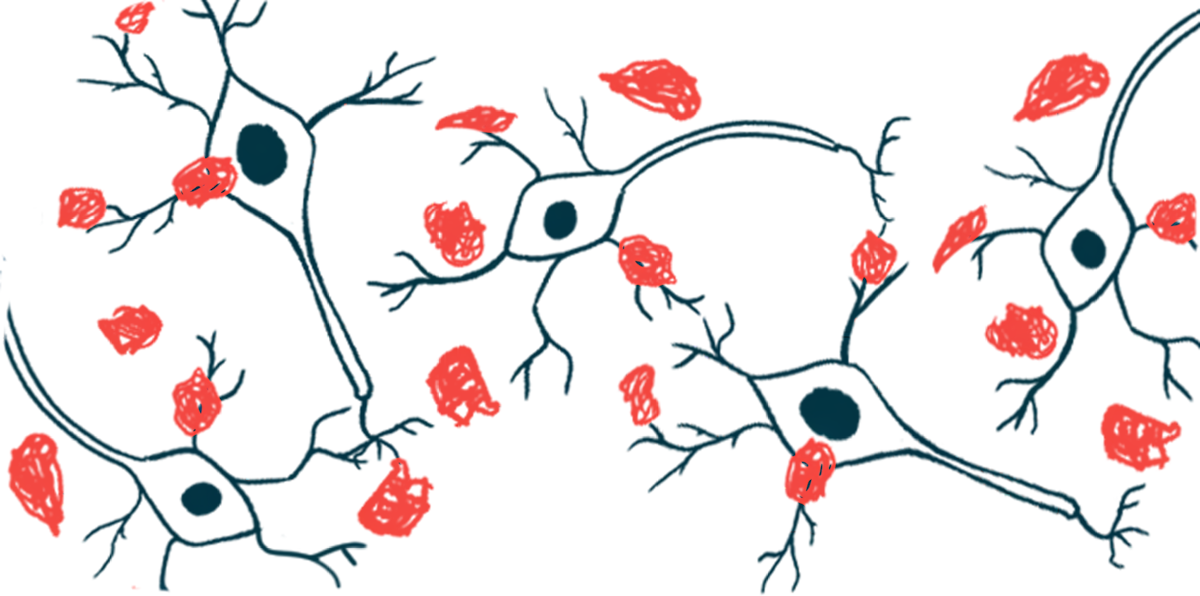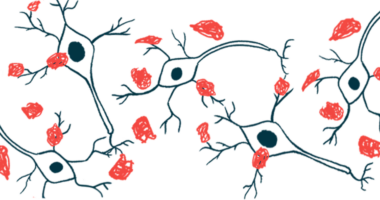Peptides prevent alpha-synuclein clumps seen in Parkinson’s in lab
Toxic protein clumps are disease hallmark; more research still needed

Ring-shaped small proteins called macrocyclic peptides — originally developed to target proteins linked to diabetes and Alzheimer’s disease — have now been shown in a laboratory to also prevent alpha-synuclein from forming the hallmark toxic clumps observed in Parkinson’s disease.
That’s according to researchers from the Technical University of Munich (TUM) in Germany, who created these peptides, which work by mimicking a piece of a protein called islet amyloid polypeptide, or IAPP. That piece of protein can fold the wrong way and form clumps in the pancreas of people with diabetes — a known risk factor for both Alzheimer’s and Parkinson’s diseases.
Even in small amounts, the peptides also prevented alpha-synuclein from clumping when triggered by IAPP, the scientists noted.
“We think that our peptides are valuable candidates for the development of effective drugs for treating Parkinson’s, Alzheimer’s, diabetes, and their co-occurrence,” Aphrodite Kapurniotu, PhD, a professor at the TUM School of Life Sciences who led the study, said in a university press release.
Because the peptides were tested in the lab, in test tubes, it is still too early to know if the findings will translate to patients. According to Kapurniotu, “further research is needed before suitable drugs can be launched.”
In the meantime, patent applications have already been filed, per the release.
The research results, detailed in “Multi-Targeting Macrocyclic Peptides as Nanomolar Inhibitors of Self- and Cross-Seeded Amyloid Self-Assembly of [Alpha]-Synuclein,” were published in Angewandte Chemie International Edition, a journal of the German Chemical Society.
Peptides originally developed for targeting proteins in diabetes, Alzheimer’s
In Parkinson’s, single units of alpha-synuclein misfold and clump into long, thread-like fibers called fibrils that are toxic to nerve cells. These clumps, or aggregates, contribute to how the disease develops and progresses over time.
In Alzheimer’s, similar changes occur with tau and amyloid-beta proteins. In diabetes, they occur with IAPP.
Increasing evidence suggests that having diabetes raises a person’s risk of developing Alzheimer’s or Parkinson’s. One possible reason is that the proteins involved in each disease can interact with each other. For example, IAPP amyloid fibrils can trigger alpha-synuclein to clump faster, essentially acting like a seed that starts the process.
Earlier work by Kapurniotu’s team showed that two lab-made macrocyclic peptides — short strings of protein building blocks that curl into ring structures — could dock onto IAPP or a combination of IAPP and amyloid-beta, preventing them from clumping together.
Building on that work, the researchers now tested whether the two peptides, called 2b and 2e, could also prevent alpha-synuclein from forming the hallmark toxic clumps of Parkinson’s. After confirming that IAPP binds tightly to alpha-synuclein, the scientists showed that the peptides blocked their interaction.
Both 2b and 2e prevented clumping of alpha-synuclein triggered by existing fibrils of either alpha-synuclein or IAPP. In both cases, the peptides protected lab-grown rat pheochromocytoma cells — tumor cells that share characteristics with nerve cells — from damage caused by toxic clumps, even at very low concentrations.
Based on their broad spectrum anti-amyloid function and additional drug-like features, these peptides are leads for multifunctional anti-amyloid drugs. … Studies in animal models are now an important next step.
To better understand how the peptides prevented protein clumping, the researchers next studied how they interact. Using fluorescent labels, they found that both peptides, 2b and 2e, bound tightly to alpha-synuclein. At low concentrations, the peptides stayed as single units, but at higher concentrations, they formed small groups.
To explore the possible effects of the peptides in the brain, the researchers tested them in mouse brain slices. They found that both 2b and 2e reduced damage caused by preformed alpha-synuclein clumps. The peptides also protected lab-grown human dopaminergic neurons — the type of nerve cells lost in Parkinson’s.
The researchers noted that the peptides bound strongly to three specific regions on alpha-synuclein. These regions overlap with those where IAPP binds, supporting the idea that 2b and 2e may block the seeding effect of IAPP. According to the team, their ability to target multiple regions on alpha-synuclein also suggests they could be effective against amyloid fibrils.
“Based on their broad spectrum anti-amyloid function and additional drug-like features, these peptides are leads for multifunctional anti-amyloid drugs,” the researchers wrote, adding that “studies in animal models are now an important next step.” Further, the team noted that the three binding regions on alpha-synuclein may be “valuable targets” for novel drugs.







